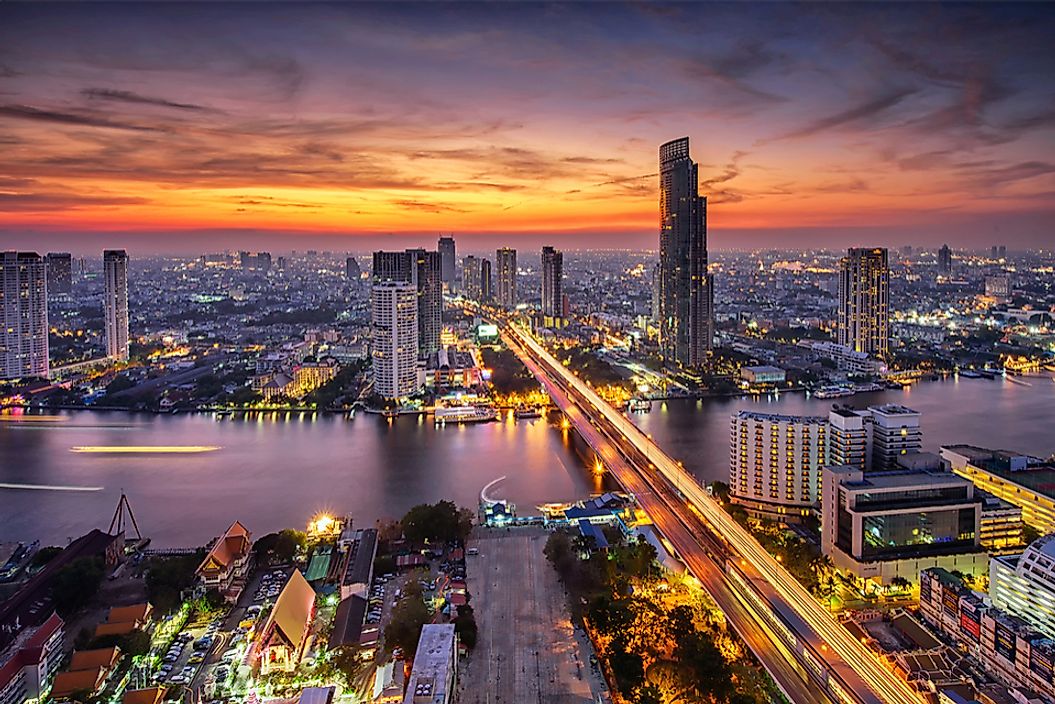What Is the Capital of Thailand?

History of Bangkok
The city of Bangkok was designated as the capital of Thailand (then known as Siam) when Rama I (1737-1809) assumed the throne in 1782 and founded the Chakkri dynasty. This was done when he moved the kingdom's court from the Chao Phraya River's west bank to its east bank. By the time of Rama I's death, the city had been established, including the stunning Grand Palace, the Wat Pho temple, and a massive city wall.
However, it was not until Rama IV (1804-68) and his successor Rama V (1853-1910) that the city truly started to develop. Rama IV reduced the rate of wat (temple) building compared to his predecessors, instead laying down several new roads, building more dwellings for the royal family, and a new moat for the city, among other things. Under Rama V, a massive public works program was undertaken to build new bridges, roads, and public buildings in an effort to modernize the capital.
During this time the triple-spired Chakkri Building in the Grand Palace, the Duist Palace and renovations on the Wat Phra Kaeo, which houses the Emerald Buddha, were completed. Rama V's reign also resulted in the country's first postal and telegraph services, the first electric tram service, and the first line of the state-owned railway.
Rama VI (1881-1925) and Rama VII (1893-1941) continued the public works programs of their predecessor. Under Rama VI, a series of locks was built throughout Bangkok to control the city's waterways. It was also during this time that Chulalongkorn University was established as a national university, making it the oldest higher learning institution in Thailand. Meanwhile, Rama VI focused on decentralizing municipal areas and divided the city into two municipalities in 1937.
Bangkok since World War II
Since the end of World War II, the city experienced unprecedented growth under Rama IX (1927-2016), which has caused issues in terms of transportation, housing, and pollution, among other things. During the height of the Vietnam War in the 1960s, tourism became an important part of the city's economy, as Bangkok was a very popular destination for American military personnel to visit.
Two decades later, the nightlife of the city had grown significantly, along with crime, the notorious tourist sex trade, and the rise of sexually transmitted diseases. However, during the 1980s Bangkok also experienced an economic boom and more urban growth. By the end of the 1990s, this was dampened by the economic crisis that affected most of Asia.
Since the start of the 21st century, Bangkok has continued to be one of the most important cities in Asia in terms of its role as a center of commerce, finance, and tourism. It is currently Thailand's major port and is the country's only major cosmopolitan city. In addition to its status as the cultural center of the country, present-day Bangkok is a bustling and crowded city that blends the ancient and modern aspects of Thailand.











